Cavenago's work Souvenir di montagna, located in the Molino Nuovo playground, is a profound reflection on the relationship between the artificial and the natural, between childhood and historical culture. This work, which allows access to its interior, offers an immersive experience reminiscent of natural caves and caverns, primordial spaces of refuge and protection. However, Cavenago goes beyond mere representation: he challenges convention, allowing visitors to physically explore the interior of a solid, breaking the barrier between viewer and work.
In 'Erratico', the artist engages with Swiss cultural tradition, recalling the ancestral sport of stone throwing in Urspunnen, a practice that celebrates strength and connection to the earth. This historical connection is echoed in the Battle of the Big Stones in Giornico, where stones were weapons of territorial defence. The Swiss defence bunkers, with their loopholes for territorial control, camouflaged among the rocks, represent a further dialogue between artificial and natural. These defence elements, camouflaged as rocks, become symbols of resistance and protection, evoking Switzerland's ability to maintain its neutrality and security through the world's conflicts.
Cavenago, inspired by an artistic legacy ranging from Alberto Giacometti to Albrecht Dürer, transforms pure geometric forms into complex and irregular representations. Giacometti's 'Kubus', preserved at the Kunsthaus Zurich, explores the tension between geometry and the portrait, while Dürer's irregular polyhedron in 'Melencolia I' symbolises the enigma and depth of the human condition. Similarly, Cavenago starts with a regular hexahedron, a Platonic solid, and through an eight-stage truncation process, introduces the irregularity and randomness that characterise natural forms. The result is a tetracaidecahedron, or truncated cube, which in Cavenago's case, becomes a reminder of the imperfection and beauty of nature.
The placement of 'Erratico' in a playground raises further reflections. In a context intended for childhood, the work invites us to consider play as a universal practice of exploring and understanding the world. Playing war, simulating dynamics of defence and attack, is a way for children to exorcise real violence and develop cognitive and social skills. The work's loopholes, which allow a view of the outside, are reminiscent of bunkers, offering a perspective of protection and vigilance.
The integration of the playful element with historical and cultural references makes 'Erratico' a complex, layered work. The artist suggests that, even in a changing world, there are spaces of refuge and safety. The use of irregular shapes and truncated surfaces is not only a tribute to the randomness of nature, but also a critique of formal perfection, inviting viewers to find beauty and meaning in imperfections and diversity. Through the sensory experience of entering the work, with light and shadow dancing through the slits, Cavenago creates a microcosm of reflection and contemplation, a 'mountain souvenir' that connects us with the deepest roots of our existence and culture.
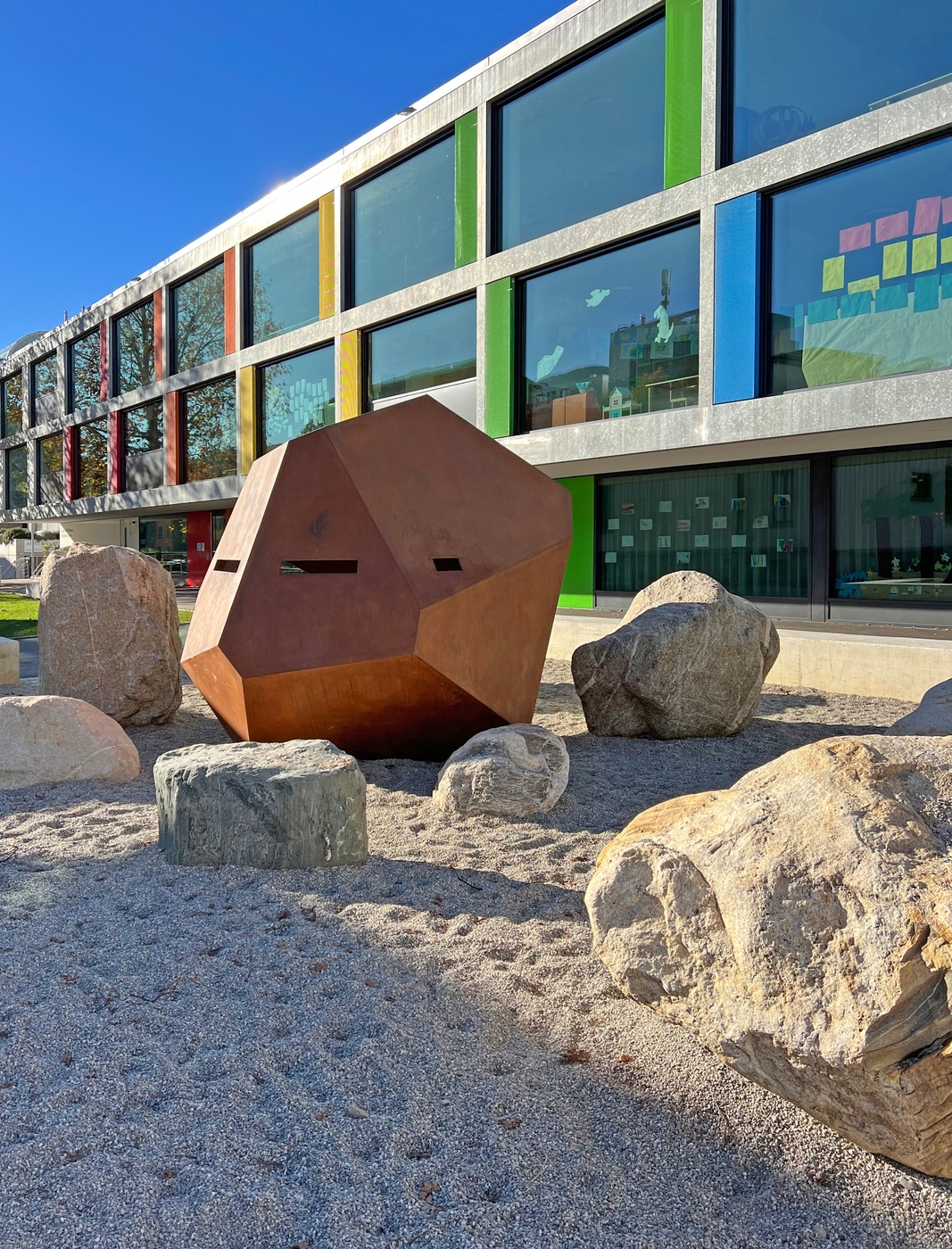
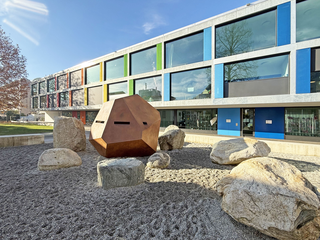
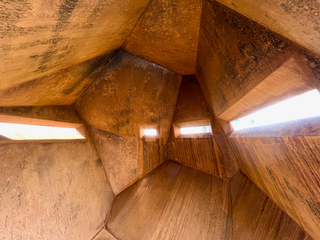
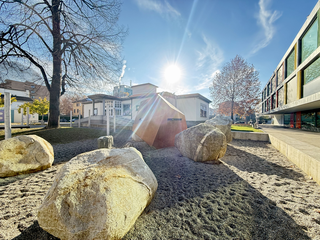
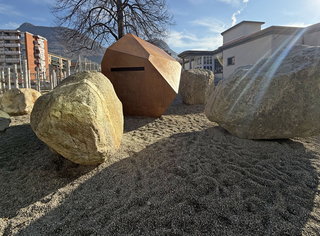
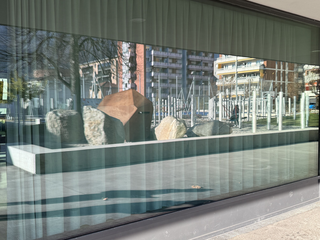
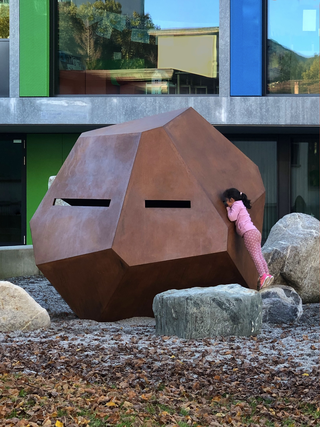

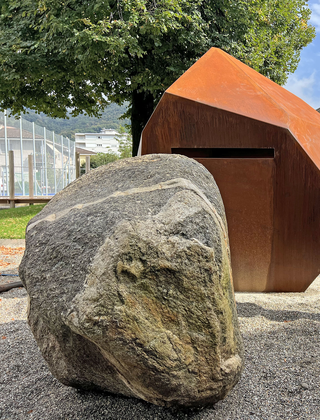
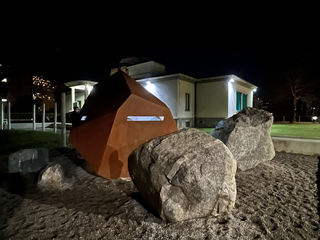
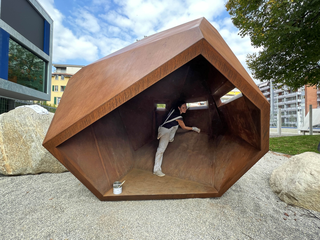
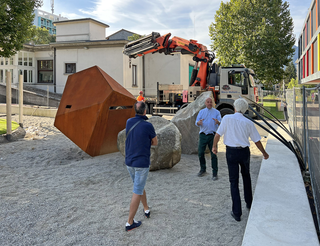
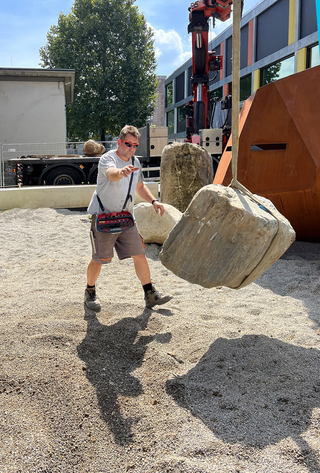
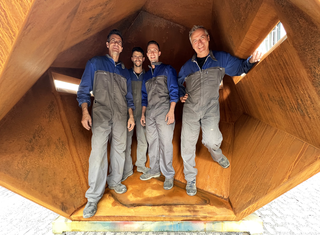

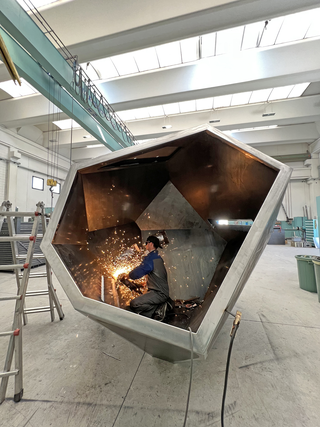
Social
Contatti
umberto@cavenago.info